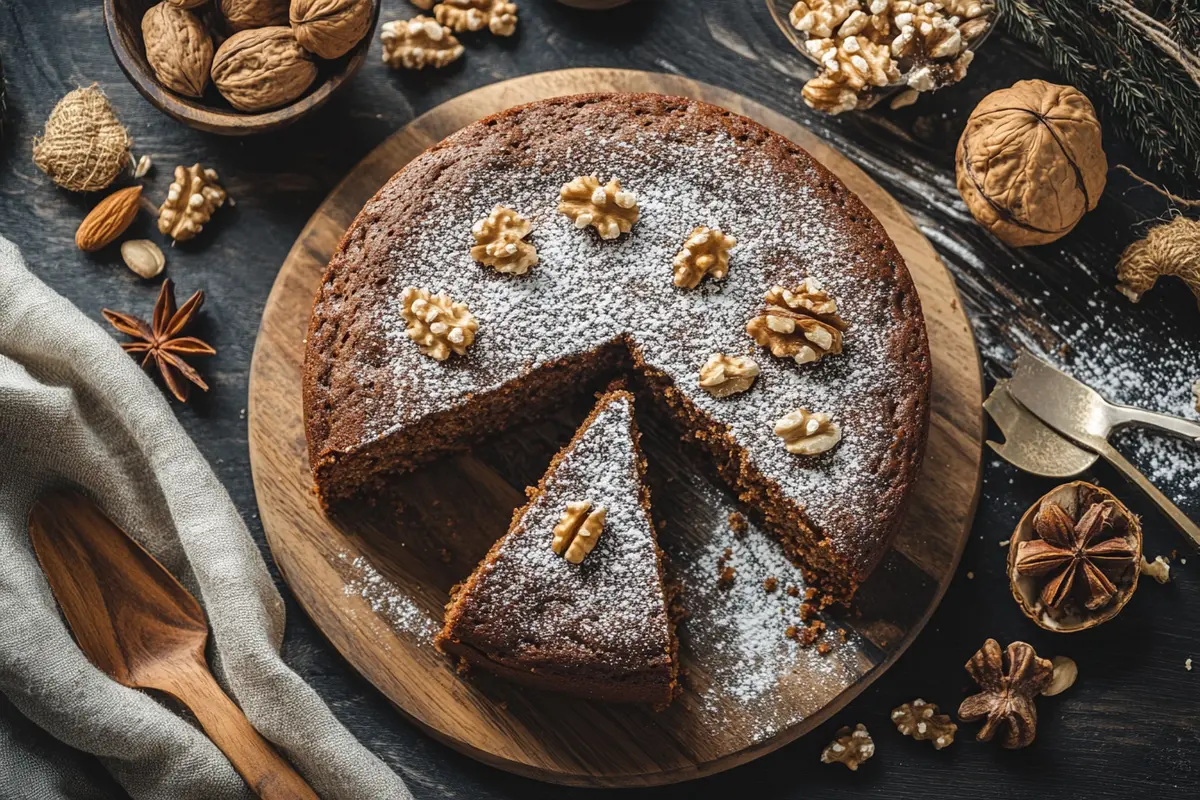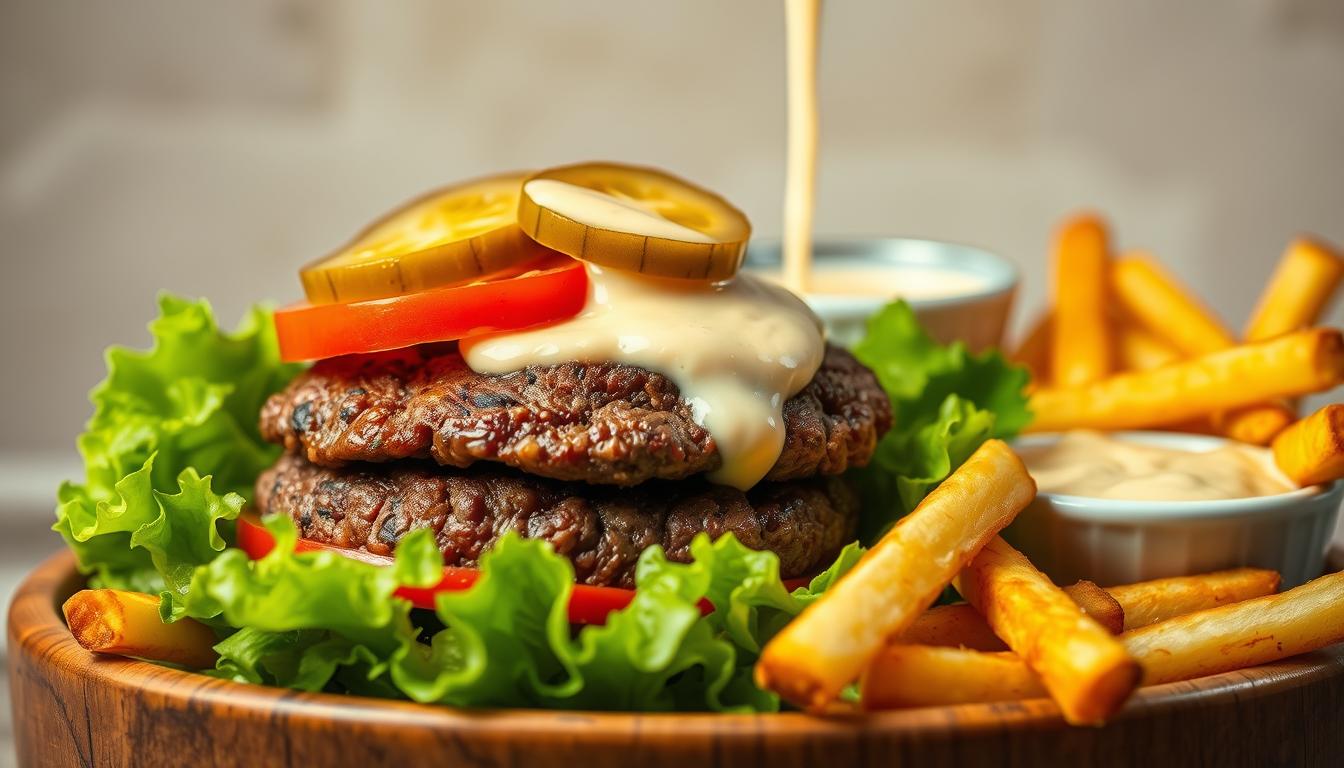Buckwheat Cake Recipe: Nutty & Healthy Delight
Are you craving a sweet treat that feels both comforting and healthy? If so, you might love this Buckwheat Cake Recipe: Nutty & Healthy Delight. In today’s baking world, many people are searching for unique desserts that stand out from the usual chocolate or vanilla offerings. This recipe gives you exactly that and more. It highlights the earthy, nutty profile of buckwheat while ensuring you get a soft and moist cake. Moreover, it adds a hint of wholesome goodness that might just make you reach for a second slice.
In this detailed guide, we will explore every aspect of creating and enjoying this Buckwheat Cake Recipe: Nutty & Healthy Delight. Get ready for plenty of baking tips, health insights, and creative twists to make your dessert truly shine. Best of all, we’ll keep it conversational, so it feels like we’re chatting over coffee in your kitchen. We’ll cover everything from the core ingredients and essential tools to advanced techniques and frequently asked questions. So stay with me, and we’ll transform your next baking session into a memorable event.
1. Understanding Buckwheat: A Quick Overview
Have you ever wondered why the word “buckwheat” pops up in so many health-conscious recipes? Surprisingly, buckwheat is not a grain or a type of wheat, despite its name. Instead, it’s a pseudocereal, which places it in a category similar to quinoa. This seed has been around for centuries, prized by different cultures for its hearty, earthy flavor and impressive nutrition. If you’ve been hesitant to try it, you’re not alone. Many people only discover buckwheat flour after seeking gluten-free or alternative baking ingredients.
High Nutritional Value: One of the main draws of buckwheat is its nutritional profile. It typically contains more protein than many common grains. Consequently, it can help you feel fuller and more energized after indulging in a baked treat. Additionally, buckwheat is packed with minerals like magnesium, manganese, and copper, plus a decent amount of antioxidants.
Unique Flavor: When used in baking, buckwheat offers a subtle nuttiness. This flavor can deepen and intensify depending on what you pair it with. Some bakers love mixing in warm spices like cinnamon or nutmeg. Others enjoy combining it with dark chocolate or sweet fruit fillings. In any case, buckwheat can add complexity to your typical dessert lineup.
Misleading Name: Because “wheat” appears in its name, many assume buckwheat is off-limits for those avoiding gluten. However, pure buckwheat flour is usually gluten-free, as long as it’s not processed in a facility that handles wheat. Always check labels to confirm its purity. This detail matters greatly if you’re baking for gluten-sensitive friends or family members.
Overall, buckwheat stands out for its health benefits and unique taste. With so many reasons to give it a try, it’s no wonder that a Buckwheat Cake Recipe: Nutty & Healthy Delight draws intrigue from home bakers and foodies alike.
2. Why Choose a Buckwheat Cake Recipe: Nutty & Healthy Delight

You might be wondering what sets a buckwheat cake apart from other desserts. Essentially, this type of cake balances health and indulgence. It offers a hearty crumb, a subtle sweetness, and a lovely nuttiness that can make you forget about all-purpose flour. If you’re new to this ingredient, a Buckwheat Cake Recipe: Nutty & Healthy Delight is an excellent starting point.
Health-Conscious Baking: Baking with buckwheat flour provides a nutrient boost you might not get from regular flour. Because of its protein and fiber content, it can help stabilize blood sugar levels. This is especially appealing if you want a dessert that is less likely to cause a sugar crash.
Deep, Earthy Taste: Not everyone loves a dessert that is super sweet. Some prefer a mild sweetness that focuses on texture and subtle flavors. Buckwheat’s earthy taste means you can pair it with fruits, nuts, or even a drizzle of chocolate sauce without being overwhelmed by sugary notes.
Easy Adaptability: This cake can be customized to fit different diets. Although the basic recipe uses some standard ingredients like eggs and a sweetener, you can switch those out for vegan alternatives or sugar substitutes. So if you need a dairy-free or gluten-free dessert for a special gathering, this recipe can easily adapt.
Impressive Presentation: The cake’s color—slightly darker than a standard wheat-flour cake—creates a rustic and appetizing look. With the right topping or garnish, a buckwheat cake can appear quite gourmet, making it ideal for those times when you want to wow your guests.
Because of these reasons, a Buckwheat Cake Recipe: Nutty & Healthy Delight stands tall in the world of baking. It’s both satisfying and interesting, especially for those eager to try something beyond typical vanilla or chocolate cakes.
3. Key Ingredients You’ll Need
Before you jump into the actual mixing and baking, let’s pinpoint the essential items you’ll need for this Buckwheat Cake Recipe: Nutty & Healthy Delight. Most of these ingredients can be found in regular grocery stores. If you can’t find buckwheat flour in your usual aisle, check the health-food or gluten-free section.
- Buckwheat Flour: The star of the show. Look for pure buckwheat flour that’s stone-ground for a fine texture.
- All-Purpose Flour (Optional): If you’re not strictly gluten-free, adding a small portion of all-purpose flour can help lighten the crumb.
- Eggs: They bind the mixture and provide moisture. You can replace them with flax eggs for a vegan version.
- Sweetener: Most commonly, people use sugar, honey, or a sugar substitute. The sweetener you choose will influence the cake’s overall taste.
- Butter or Oil: Fats such as melted butter, coconut oil, or olive oil keep the cake moist.
- Leavening Agents: Baking powder and/or baking soda help your cake rise. Always ensure they’re fresh for best results.
- Liquid Component: Some recipes call for milk, while others prefer buttermilk or even yogurt. This step impacts flavor and tenderness.
- Salt: A pinch of salt enhances the buckwheat flour’s inherent nutty quality.
- Optional Add-ins: You might include chocolate chips, chopped nuts, dried fruits, or a swirl of jam. These extras can elevate your cake’s uniqueness.
When you gather these ingredients in advance, you’ll find that the baking process flows smoothly. It’s also wise to measure everything out before you begin. Accordingly, this sets you up for success and prevents mid-recipe surprises.
4. Tools and Equipment for Buckwheat Baking
Most home bakers already have the essential tools. However, ensuring you have the right equipment can be crucial when aiming for the perfect Buckwheat Cake Recipe: Nutty & Healthy Delight. Let’s go through the must-haves:
- Mixing Bowls: At least two, so you can keep your wet and dry ingredients separate until combining.
- Measuring Cups and Spoons: Accuracy matters. Even minor differences can affect texture.
- Whisk or Electric Mixer: For smoothing out lumps, beating eggs, and ensuring a uniform batter.
- Spatula: Ideal for folding ingredients gently, which helps maintain airiness.
- Sifter: Not strictly required but can help prevent clumps in your flour.
- Cake Pan: An 8 or 9-inch round pan works well. A springform pan is also an option if you want easy release.
- Parchment Paper: Lining your pan can keep the cake from sticking.
- Cooling Rack: Once baked, your cake should cool properly to maintain its structure.
Optionally, you might rely on a stand mixer if you bake frequently. A stand mixer can speed things up, especially when blending wet ingredients or creaming butter and sugar. Nonetheless, a simple hand whisk can achieve similar results if you’re ready to use some elbow grease.
5. Crafting Your Buckwheat Cake Recipe: Nutty & Healthy Delight (1 of 3)
Now that you’re aware of the ingredients and tools needed, let’s move on to the step-by-step instructions. Baking a buckwheat cake doesn’t differ dramatically from baking any other cake. However, a few key steps help highlight its distinctive flavor. Follow these directions for a standard single-layer cake. If you plan to create a multi-layer masterpiece, simply double or triple the recipe.
Step 1: Preheat and Prepare the Pan
First, set your oven to 350°F (175°C). Meanwhile, grease your cake pan with butter or a cooking spray, then line the bottom with parchment paper. Because buckwheat flour is somewhat dense, ensuring the pan is well-prepared can make all the difference in how evenly the cake bakes.
Step 2: Sift and Combine Dry Ingredients
In a large bowl, sift together the buckwheat flour, a small amount of all-purpose flour (if using), baking powder, baking soda, and salt. Afterward, whisk the mixture briefly to be sure the ingredients are uniformly distributed. This step sets the foundation for a consistent crumb.
Step 3: Mix Wet Components
In a separate bowl, whisk your eggs with your chosen sweetener. Then, add melted butter (or oil) plus your liquid component, like milk or buttermilk. Stir well until everything looks smooth. A moderate lumps are fine, but aim for a mostly uniform mixture.
Step 4: Blend Wet and Dry
Now, pour the wet mixture into the bowl of dry ingredients. Gently fold them together with a spatula. Conversely, do not overmix. Overworking buckwheat flour might lead to a tougher cake. Instead, aim for a cohesive batter while retaining some lightness.
Step 5: Pour and Bake
Finally, transfer the batter into your prepared pan. Place it in the oven and bake for about 25 to 30 minutes. Keep an eye on it, as ovens vary in temperature accuracy. If a toothpick inserted into the center comes out with just a few crumbs, you’re good to go. Let the cake rest in the pan for 10 minutes before gently transferring it to a cooling rack.
6. Buckwheat Cake Recipe: Nutty & Healthy Delight (2 of 3) — Flavor Boosters and Variations

Let’s face it, variety can make baking more fun. This Buckwheat Cake Recipe: Nutty & Healthy Delight can adapt to numerous flavor profiles. Below are some popular ways to elevate your cake:
- Spice Infusions: Cinnamon, nutmeg, or a dash of cardamom can amplify the cake’s earthy notes. Because buckwheat is subtle, these spices won’t overshadow it.
- Citrus Zest: Adding lemon or orange zest can introduce a fresh zing. This pairs especially well if you plan on using a sweet frosting.
- Chocolate Chunks: If you’re a chocolate lover, fold in some chopped dark chocolate. The bitterness of dark chocolate blends wonderfully with buckwheat’s distinct flavor.
- Nuts and Seeds: Walnuts, almonds, or sunflower seeds can add crunch. Moreover, they align with the cake’s rustic vibe.
- Fruit Swirls: Drizzle a swirl of jam or a mashed banana for natural sweetness. Meanwhile, you can layer fresh fruit like raspberries or blueberries.
Frosting vs. Glaze: This is often a question of personal preference. Frostings made with cream cheese or butter create a richer dessert, while a simple glaze using powdered sugar and milk keeps things light. You can also drizzle honey or maple syrup for a gentle sweetness. Ultimately, choose whichever topping satisfies your sweet tooth.
Serving Suggestions: Once cooled, slice the cake and serve with a dollop of whipped cream, ice cream, or a simple fruit compote. This balancing act between sweet topping and the cake’s nutty base can make each mouthful exciting.
7. Tips for Consistent Success
Even the most straightforward recipe can benefit from a few pro tips:
- Measure Accurately: Using a kitchen scale can ensure consistent results, especially when working with alternative flours like buckwheat.
- Mind the Freshness: Stale buckwheat flour may taste bitter. Always check the expiry date and store leftover flour in a cool place.
- Room-Temperature Ingredients: Cold eggs or milk can lead to uneven batter. Let them sit at room temperature for about 30 minutes beforehand.
- Taste Test: Buckwheat’s flavor can vary based on brand or freshness. If you find it too strong, try mixing it with a bit more all-purpose flour until you get used to the taste.
- Avoid Overbaking: Keep track of the cake near the end. Overbaking dries out the crumb and dulls the flavor.
When you follow these pointers, you’re more likely to produce a lovely, evenly baked cake. After all, nothing disappoints more than slicing into a cake only to discover it’s dry or undercooked.
8. Buckwheat Cake Recipe: Nutty & Healthy Delight (3 of 3) — Health Benefits
You might wonder if this dessert aligns with your health goals. Let’s be clear: cake is still a treat. However, using buckwheat flour might give you certain advantages compared to standard wheat-based cakes. This Buckwheat Cake Recipe: Nutty & Healthy Delight can offer:
- Better Protein Content: Buckwheat has more protein than common flours, assisting in muscle support and satiety.
- Rich in Fiber: Adequate fiber encourages digestive health and helps stabilize blood sugar.
- Mineral Boost: Essential minerals like magnesium and copper support various bodily functions, from energy production to bone health.
- Lower Glycemic Impact: Because of its protein and fiber, buckwheat can moderate blood sugar spikes, though portion control still matters.
- Potential Gluten-Free Option: By omitting all-purpose flour, you can keep this cake gluten-free, which is beneficial for those with celiac disease or gluten sensitivities.
Nevertheless, do remember that sweetness and fats come into play. If you want to keep things lighter, reduce the sugar or opt for less butter. Or skip any sugary frosting and top your slice with fresh fruit. The choice is yours. Indeed, you’re in control of how indulgent you want to be.
9. Common Pitfalls to Avoid
Sometimes a recipe goes wrong, leaving you wondering what happened. Here are typical errors with this Buckwheat Cake Recipe: Nutty & Healthy Delight and how to fix them:
- Dense Cake: Overmixing the batter or using old leavening agents may cause this. Also, check that you measured your flour properly.
- Dry or Crumbly Texture: This often results from overbaking or not adding enough liquid. Keep an eye on oven temperature.
- Off or Bitter Taste: Buckwheat flour can go rancid if stored incorrectly. Always smell and taste a small pinch before baking.
- Fallen Center: Resist the urge to open the oven door too soon. Rapid temperature changes can make the center collapse.
- Soggy Bottom: Insufficient baking time or using too much liquid can lead to a damp layer near the bottom.
Each of these pitfalls has a straightforward solution. For example, using fresh ingredients, calibrating your oven, and measuring meticulously can significantly reduce the chance of mistakes.
10. Vegan and Gluten-Free Alternatives
It’s worth discussing how you can adapt this Buckwheat Cake Recipe: Nutty & Healthy Delight if you follow specific dietary guidelines. Many people are seeking vegan or fully gluten-free sweets that still taste amazing.
Vegan Approach
To go vegan, replace the eggs with either applesauce, mashed banana, or a flaxseed mixture (1 tablespoon ground flax + 3 tablespoons water per egg). Use a plant-based milk such as almond or oat for your liquid component. Additionally, switch butter for coconut oil or a vegan margarine. Because of these substitutions, you preserve moisture but remove any animal-based ingredients.
Gluten-Free Emphasis
If you need a 100% gluten-free treat, skip the all-purpose flour. Make sure your baking powder and other additions are certified gluten-free. Because pure buckwheat flour is naturally gluten-free, you shouldn’t run into issues if you pick a brand processed in a gluten-free facility. That said, read labels carefully, since cross-contamination can occur. If the batter seems too heavy, a small amount of potato starch or cornstarch might lighten it.
Flavor Considerations: Going vegan or gluten-free may slightly alter the cake’s taste and texture. Yet, you can compensate by adjusting sweeteners or adding spices. Don’t be discouraged if your first attempt is not perfect. Buckwheat can be finicky, but practice truly helps.
11. Frequently Asked Questions about Buckwheat Cake
As we near the end of this Buckwheat Cake Recipe: Nutty & Healthy Delight, it’s time to address your burning questions. Below are some popular People Also Ask (PAA) queries:
Q: What’s the easiest way to make a vegan buckwheat cake recipe?
A: Replace eggs with flax eggs, and use a plant-based milk along with coconut oil. Stick to the same mixing steps, ensuring you don’t overblend.
Q: How can I turn this into a vegan gluten free buckwheat cake?
A: Simply omit any wheat flour, relying solely on certified gluten-free buckwheat flour. Then, stick to vegan swaps like flax eggs and non-dairy milk. Adjust the batter’s thickness if needed, since pure buckwheat can be dense.
Q: Will buckwheat flour taste too strong?
A: Many find it mild yet earthy. If you find the flavor too pronounced, you can blend it with other flours or incorporate sweeteners and spices that mask any intensity.
Q: Can I store the cake for a couple of days?
A: Yes. Keep it in an airtight container at room temperature for up to three days, or refrigerate to extend freshness. You can also freeze slices for longer storage.
Q: Does this cake work for special occasions?
A: Absolutely. Decorate it with frosting, fresh fruit, or edible flowers for a birthday or holiday event. The slight difference in flavor can impress guests looking for something new.
Q: How do I ensure the cake remains moist?
A: Check your baking time. Overbaking is often the culprit of dryness. Also, buttermilk or yogurt can add extra moisture if you find your cake turning out drier than desired.
These answers should address the bulk of your concerns. If anything remains unclear, feel free to test small batches or experiment. Each home kitchen differs, so you may have to adjust based on altitude, oven quirks, or your personal flavor preferences.
12. Buckwheat Cake Recipe: Nutty & Healthy Delight (Conclusion)
We’ve arrived at the final portion of our exploration into the Buckwheat Cake Recipe: Nutty & Healthy Delight. Throughout this journey, you’ve uncovered why buckwheat flour is so appealing. You’ve also learned how to merge healthy ingredients with satisfying flavors, ensuring your homemade cake is nutritious yet indulgent. From preparing the pan to whipping up a vegan or gluten-free variation, we’ve covered each step in detail.
Ultimately, your success hinges on a few basic principles: measure accurately, avoid overmixing, and always use fresh, quality ingredients. That’s all it takes to elevate a humble buckwheat batter into a memorable dessert. With its earthy taste and health perks, this cake could quickly become a household favorite. Whether you serve it plain, topped with fresh fruit, or frosted with a silky glaze, it’s sure to draw compliments from family and friends.
For more recipes: invisible apple cake recipe: Hidden Apple Delight




